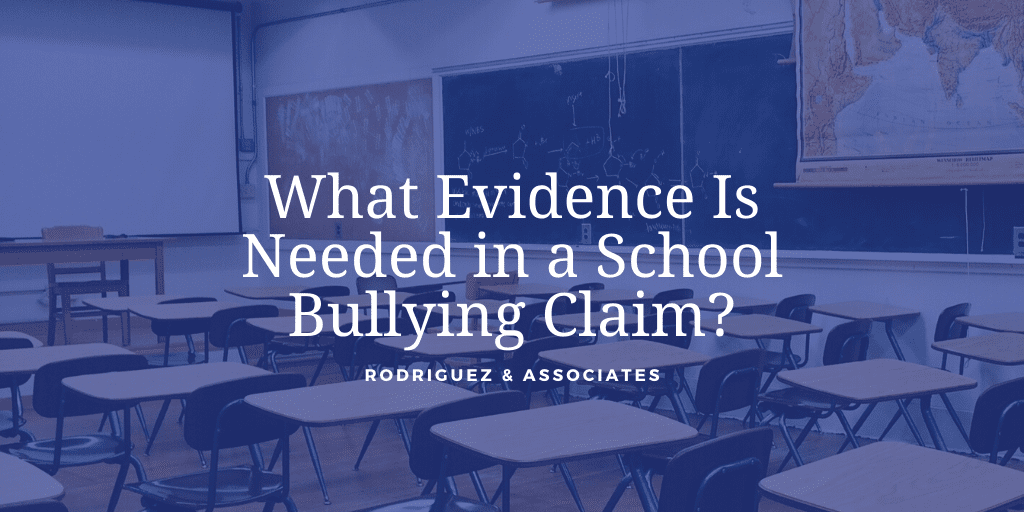School administrators often do not take action against school bullying until damage has already occurred — and if your child has suffered due to this act of violence, you may hold the school district accountable for his or her injuries. You will need to establish with clear evidence that the school failed to uphold its duty of care to your student under federal law.
Holding a School District Accountable for Bullying Under Title IX
If your child suffered bullying due to a protected characteristic under Title IX of the Civil Rights Act, this is an act of harassment under federal law. You can hold the district accountable by proving the following elements.
- Your student is a member of a statutorily protected class, with regards to race, gender, disability, etc.
- Your student suffered harassment based on the protected class.
- The bullying is severe, pervasive, and objectively offensive.
- At least one school official with authority to act had actual knowledge of the harassment.
- The school was deliberately indifferent to the bullying.
Non-Protected Bullying Claims
If the nature of the bullying does not have anything to do with a protected class under the Civil Rights Act, you can still file a lawsuit against the school. Schools have a responsibility to provide students with a safe environment to support their education, and the state requires each district to have anti-bullying policies.
You may be able to hold the district liable if any of the following actions occurred.
- The district failed to adequately protect all of its students against bullying.
- School personnel witnessed the bullying and failed to prevent or stop it.
- The bullying occurred as a result of statements or actions by a teacher, coach, or other school official.
To establish the school’s liability in this case, you will need to prove the following elements.
- A relationship between the school and your student existed.
- Your student experienced harm that was ultimately foreseeable and fairly direct.
- The school willfully disregarded your child’s safety.
- The school used its authority to create an opportunity for bullying that would not have otherwise existed.
What to Do If You Believe Your Child Is a Victim of Bullying
To preserve your child’s right to justice and strengthen your bullying claim, you will need to gather clear and convincing evidence. This evidence may include witness testimony, correspondence with the district and school officials, screenshots and photographs of the harassment, and hospital or therapy records.
If your child tells you he or she is being bullied, take the following steps to preserve and collect this information.
- Talk to your child. Ask him or her for details about the bullying and record the information in as much detail as possible.
- Collect any tangible evidence of the bullying. Screenshot messages and emails, record audio messages, and take videos and photographs of any visible injuries.
- If your child has to seek medical treatment or therapy for the bullying, save all records from these visits.
- Contact the school about the bullying and file a complaint. Record information on who you talk to and when any meetings take place.
- Document the school’s responses to the bullying. If any agreed-upon resolutions take place, ask for the school to put them in writing and officials to sign the agreements.
- Review the school’s anti-bullying policy and save copies for your records.
- Contact a school bullying attorney for legal advice.
School bullying lawsuits can be contentious and difficult to prove, but if your child’s school fails to take action against his or her bully, an attorney can help. Your attorney will advocate for your child’s best interests during each stage of your case. If you have not done so already, contact a California school bullying attorney as soon as possible to discuss your legal options.
